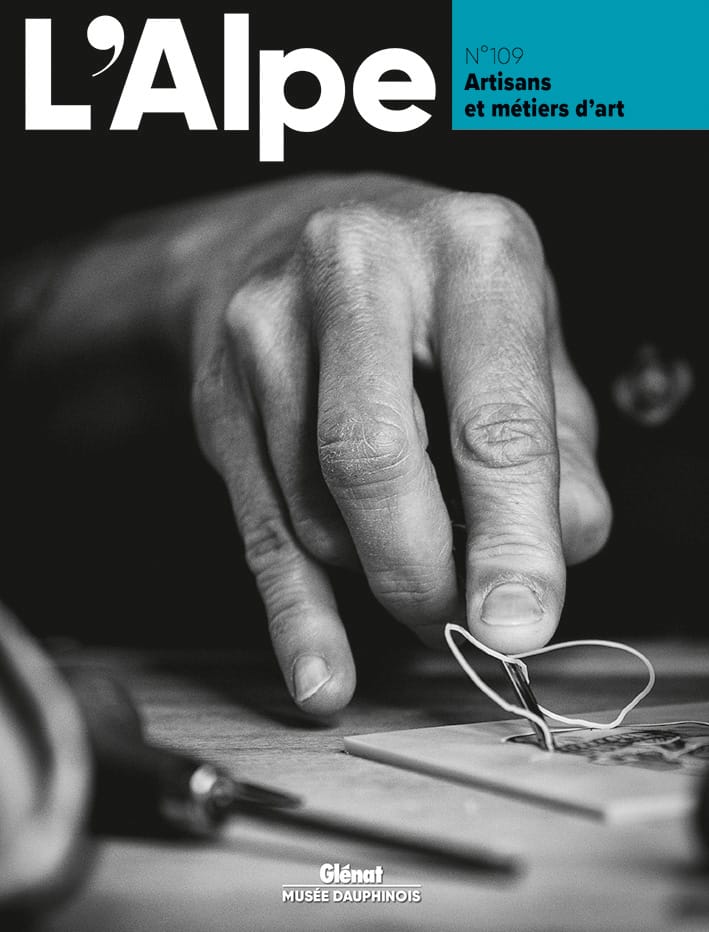Translations : Cary Bartsch
Written for people looking for information with meaning, L’Alpe is the first review devoted to the many cultures and heritages of Alpine Europe. Its ambition is to provide information, language barriers not withstanding. As your guide, L’Alpe looks at the people who, from the meandering Danube to the Rhône, have adapted to an exceptional climate. A cross between a book and a magazine, it draws on the first to provide background documents on a main theme, supported by rigorous analysis, an insistence on quality and the notoriety of renown authors. From the second, it adopts a quarterly rhythm for regular contributions to current debates, rich illustrations, the insatiable curiosity of its journalists and a necessarily didactic approach. Though rigorous in its approach to knowledge, L’Alpe is not a scientific journal. It calls on the contributions of history, geography, archaeology, ethnology, etc. to shed light on the meaning of the traces left by man on the mountain environment. And it is also open to current debates on the future of the Alps and other mountains in the world.
This is not a mountain
Magritte, his poetry and his facetious personality perfectly sum up art and mountains, artists and L’Alpe, the under side of the great façade that we take such pleasure in deciphering, in the emblematic painting on the cover. L’Appel des cimes (The call of the summits) is, however, only one of the many facets of the adventure between surrealistic painters and the mountains. Here, some images and dreams.
This is not (only) art
Was Cro-Magnon an artist? We may doubt it. Francesco Fedele takes an original look at a symbolic act that has survived to this day. In the Alps, prehistoric drawings and engravings etched into rock are above all the vestiges of a cultural dialogue lasting thousands of years with an omnipresent mineral universe.
Painters and painting in the Alps
From the handsome sketches pencilled by Albrecht Dürer in the field during the 1400s to the current work by Richard Long, artistic representations of the Alps over the centuries include a number of masterworks that our readers have often had the occasion to admire in the first 20 issues of L’Alpe. Never yet, however, have we offered a general, transversal, European and encyclopedic overview. Here it is.
Gothic meeting point
The Savoy Duchy, a crossroads for people and ideas, was traversed by artists and artistic influences between the 1200s and the 1400s. But can one speak of Savoy art? That is the question addressed by a first-time grouping of sculptures. An exhibition in Chambéry and Annecy.
Savoy in miniature format
Through the inspired brush of the illuminator, L’Apocalypse of the Savoy dukes asserts the power of a rapidly growing State. Under the divine thunderbolts marking the end of time, lies the splendid landscape of a rich land, a true Alpine Eden at the edge of the green pastures of Paradise.
Wall art
Virtually neglected in the history of art, wall paintings starting at the end of the Middle Ages nevertheless constituted a prevalent art form. The walls of chapels, churches and other sanctuaries in the Alps were never painted more than during the 1400s and 1500s. The works are both abundant and original, and bear witness to joyful creativity.
Images from L’Alpe
The engravings by Louis Haghe and Lord Monson, offered to our subscribers starting in this issue, are unique pieces drawn from the collections of the Musée dauphinois. They were, however, also published in black and white in an album, Voyage en Dauphiné, now in the special collection of the Grenoble municipal library. Jean Adhémar invites us for a behind-the-scenes visit of his work.
Inside view
È pericoloso sporgersi! We look out at life from the window of a train. Everything would seem very clear, real, but what do we really know about the world flowing by? Is it as real as our eyes would have us believe?
A lost world
At the end of the 1700s, beginning of the 1800s, the Lac de Chède was celebrated by writers, poets, engravers and painters. Today, no one can admire the lake because a landslide obliterated the picturesque and sublime site that inspired so many of the romanticists.
Sunday at Proveysieux
Similar to Barbizon, an artist’s colony was created in the small village of Proveysieux in the Chartreuse mountains during the last quarter of the 1800s to celebrate Mother Nature in words, paintings and photography. An exhibition in Grenoble, at the Musée de l’ancien Évêché.
The deserter
In 1964, René Creux asked Jean Giono to put into novel form the life of a man who, in the middle of the 1800s, sprang out of nowhere in the Valais mountains and about whom we know nothing. His paintings are the only remaining trace, conserved notably in the Musée cantonal des Beaux-Arts in Sion. A breath of fresh air.
Nature, art and mountains
Modify the world in order to better see it, feel it and touch it. That is the technique used by certain contemporary artists in the « arterre » movement. Nature, the very essence of the work, participates fully in an often fleeting creative act. A meditative encounter with the elements and a place, in which mountains play a leading role.
The snow lion dead and dying?
In Tibet, in those far off Alps of the Himalayas, an entire people lives under the domination of the Chinese occupation forces. The national flag (mountains, snow lions and sun rays) is forbidden and almost forgotten by the younger generations. An entire cultural heritage, thousands of years old, is being crushed in just decades.


